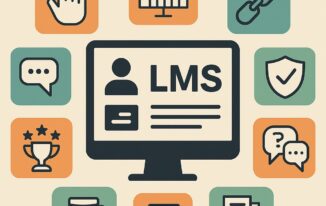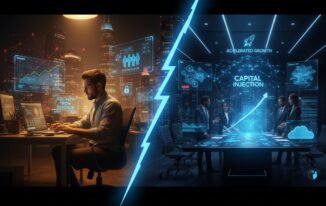As companies realize that training their customers for better product usability is the key to success in the fast-paced digital world, they offer customer training more frequently these days. Customer training platforms, like a Learning Management System (LMS), can make this process easier for customer training. Nevertheless, the perfect LMS comes with features that need to be specifically considered. In this article, we will explore the important features to look for in an LMS when delivering customer training.
User-Friendly Interface
Coming to the most important thing, ease of use needs to be at the top of any successful and the best LMS for customer training. Your customers should surf through the platform with ease, using most of their time in consuming the content, rather than getting stuck on tech-related obstacles. A user-friendly interface is important so that learners can access the training materials without any hurdles. Look for systems that guide new users with in-depth tutorials or guides.
Customization Options
Due to the unique training needs of every organization, a flexible LMS is a must. Businesses can undergo customization according to their requirement. From brand elements like logos and color schemes to designing your curriculum and learning paths, customization allows organizations to create a learning environment that speaks to their audience.
Mobile Compatibility
The modern-day customer is often on the move. Therefore, mobile responsiveness is one of the most essential features. It should be a learner-centric LMS and device-compatible, meaning it works on cell phones, tablets, laptops, and systems so that they don’t have barriers and learning prospects anywhere. Such flexibility serves to increase accessibility while accounting for unique learning styles, creating a more interactive training experience.
Advanced Analytics And Reporting
Tracking learner progress and engagement can improve training programs. A feature-rich LMS has analytics and reporting capabilities to support performance tracking and area of improvement tracking for the organization. Comprehensive analytics of completion rates, assessment scores, and qualitative feedback enable businesses to continuously optimize their training approaches.
Engagement Tool And Interactive Content
Nobody wants to disengage from passive learning. Interactive content and engagement tools will help create an immersive learning experience. Content like quizzes, polls, and forums stimulates a sense of active participation, creating a more lively learning atmosphere. Gamified elements like badges and leaderboards can also provide important encouragement to learners to accomplish what they set out to do in their training.
Integration Capabilities
Most organizations operate using combinations of different software. A better Learning management system (LMS) will connect to a similar platform in seconds, such as customer relationship management (CRM) systems or e-commerce platforms. Integrating these tools makes the training process more efficient, with data flowing seamlessly from system to system.
Security And Data Privacy
Ensuring customer data protection will always be one of the utmost priorities of any organization. An LMS should conform to strict security protocols to protect confidential information from unauthorized access. Ensure that the systems have good encryption methods, solid authentication processes in place, and are compliant with data protection guidelines.
Support And Training Resources
Even the most intuitive systems are bound to need help every once in a while. Availability of customer support can be hugely beneficial in resolving issues and minimizing disruptions to the learning process. Moreover, admin and learner support is also found in all-encompassing training resources in the form of webinars, documentation, and community forums.
Content Management And Delivery
To deliver quality training, you have to manage the content efficiently. A learning management system should feature tools to create, store, and deliver content effortlessly. Content libraries, version control, and multimedia support help the organization present a range of current learning materials. Drip-feeding or prerequisite delivery methods could make this type of learning experience even better.
Conclusion
Evaluate multiple features of LMS to choose the right one for customer training. This guarantees a positive learning experience for customers and thus a better return on investment by emphasizing an easy-to-use interface, customizations, and mobile compatibility. That said, robust analytics, interactive content, and integration capabilities augment the effectiveness of the training. Scalability, security, support, and content management are also important to having a successful LMS.
This gives the organization a 360-degree view of a converged learning experience and will equip the customers to succeed, having these features in place. With the core attributes in mind, companies can blindly pick an LMS that aligns with their training requirements and long-term goals.




